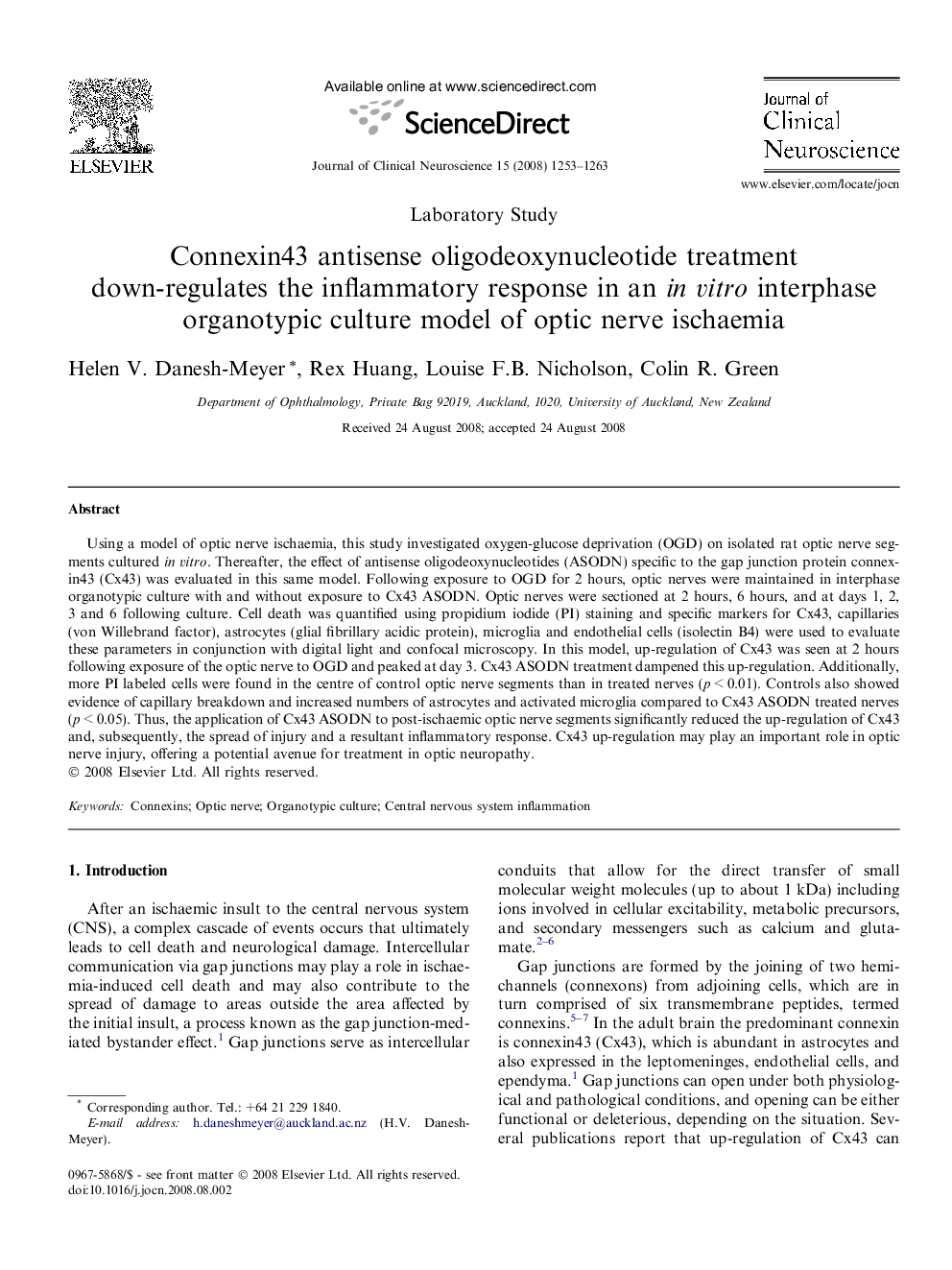| Article ID | Journal | Published Year | Pages | File Type |
|---|---|---|---|---|
| 3062381 | Journal of Clinical Neuroscience | 2008 | 11 Pages |
Using a model of optic nerve ischaemia, this study investigated oxygen-glucose deprivation (OGD) on isolated rat optic nerve segments cultured in vitro. Thereafter, the effect of antisense oligodeoxynucleotides (ASODN) specific to the gap junction protein connexin43 (Cx43) was evaluated in this same model. Following exposure to OGD for 2 hours, optic nerves were maintained in interphase organotypic culture with and without exposure to Cx43 ASODN. Optic nerves were sectioned at 2 hours, 6 hours, and at days 1, 2, 3 and 6 following culture. Cell death was quantified using propidium iodide (PI) staining and specific markers for Cx43, capillaries (von Willebrand factor), astrocytes (glial fibrillary acidic protein), microglia and endothelial cells (isolectin B4) were used to evaluate these parameters in conjunction with digital light and confocal microscopy. In this model, up-regulation of Cx43 was seen at 2 hours following exposure of the optic nerve to OGD and peaked at day 3. Cx43 ASODN treatment dampened this up-regulation. Additionally, more PI labeled cells were found in the centre of control optic nerve segments than in treated nerves (p < 0.01). Controls also showed evidence of capillary breakdown and increased numbers of astrocytes and activated microglia compared to Cx43 ASODN treated nerves (p < 0.05). Thus, the application of Cx43 ASODN to post-ischaemic optic nerve segments significantly reduced the up-regulation of Cx43 and, subsequently, the spread of injury and a resultant inflammatory response. Cx43 up-regulation may play an important role in optic nerve injury, offering a potential avenue for treatment in optic neuropathy.
